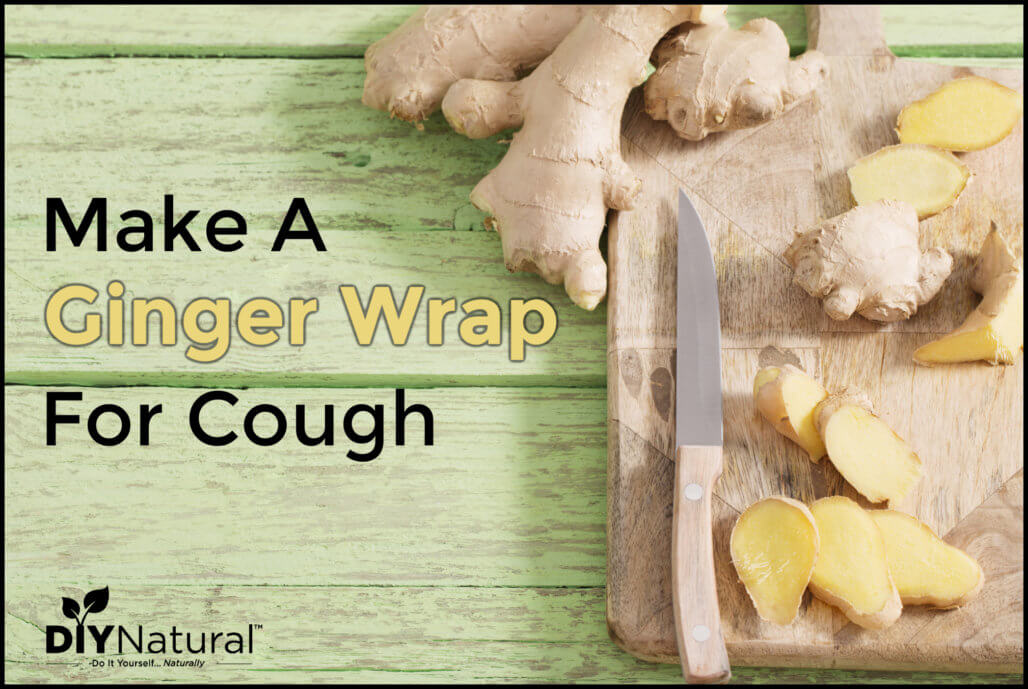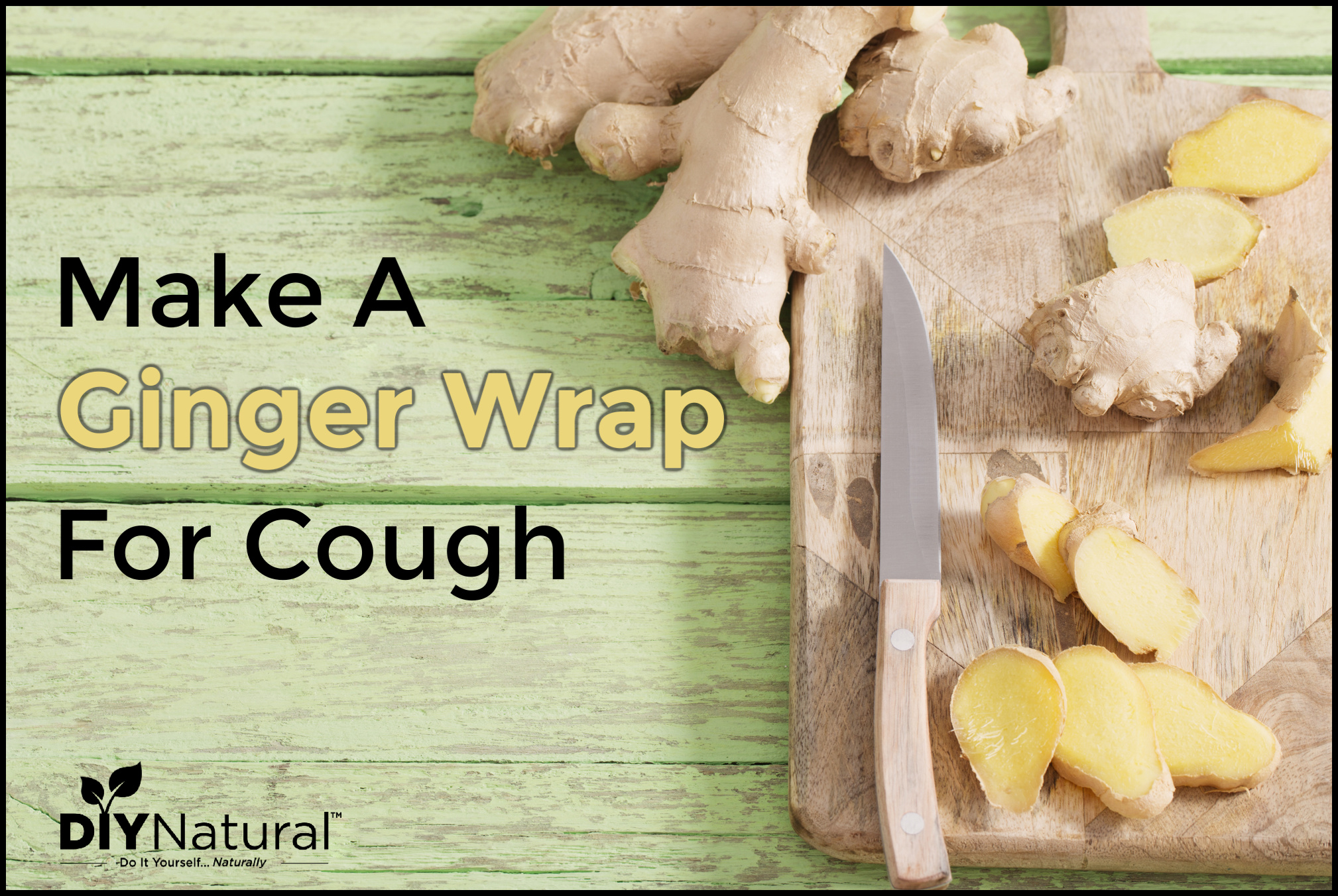
Although a mustard wrap is popular for congestion and mucus, I found a ginger wrap for cough and mucus (a.k.a. wrapped ginger) works better.
When I was a kid, my grandmother talked about mustard plasters. I remember thinking it was hot dog mustard that you would plaster on something. Turns out I wasn’t far off.
Since then I have tried many different plasters, I found some that really work well, like a ginger wrap for cough.
Ginger Wraps Are Plasters
What are Plasters?
Plasters are a sort of large bandage that holds a substance that then sits on the skin. From there, the substance gets in through the pores to help with a number of ailments.
Mustard Plasters
Mustard plasters are the most common. To make them you grind mustard seed and add water until it makes a paste. You then spread it on a cloth and “plaster” on the skin. Using this way can cause discomfort, but many consider it worth the effort as it does break up congestion and help to shorten the life of a cold.
Enter the ginger wrap.
Yes, ginger is anti-inflammatory, but did you know that it is also effective against cancer and way more?
The health-promoting perspectives of ginger are well known. It can treat a wide range of diseases via immunonutrition and anti-inflammatory responses. As a result of the anti-inflammatory effect of ginger, it can reduce muscle pain after intense physical activity. Likewise, the anticancer potential of ginger is well documented and its functional ingredients like gingerols, shogaol, and paradols are the valuable ingredients which can prevent various cancers, angiogenesis and metastasis, induction of apoptosis, and inhibition of cell-cycle progression. Besides these, it improves cardiovascular disorders, diabetes mellitus, and gastrointestinal health.[1]
Sign me up for the ginger wrap, please!
Ginger Wrap for Cough
In experimenting with several things, I found that ginger was most effective at easing congestion. It is “hot” and penetrates through the skin well. Using ginger directly on the skin may be irritating like the mustard, but you can use a cloth between the layers if need be.
How to Make the Wrapped Ginger for Cough
- Grate or puree about a half a cup of fresh ginger
- Place in a strainer lined with cheesecloth to drain
- Spread on an old towel about 9-12 inches square
- Lay the towel with the paste on your chest as you are laying down
- Cover with another towel that is damp and warm
- Leave on for 15-20 minutes
- Rinse off with a warm cloth or shower
- Repeat if necessary
If you experience discomfort from the ginger wrap, you can use another old towel on your skin under the towel with the paste. You’ll need the vapors to penetrate your skin to benefit from the herb.
Wraps For Sensitive Skin
If your skin seems very irritated or red (some redness is normal and will fade after a bit), you can apply the paste to your feet. Simply wash your feet, apply the paste to the towel as above, and wrap up for 20 minutes or so. Rinse or shower as usual. The ginger will be absorbed by the soles of your feet and travel through your system, providing relief without having to apply it to your chest.
You can also make a slurry (like a thin paste) of oatmeal and apply it to the skin after a session with ginger. Oats are known to be soothing and can help if the ginger is too strong for your skin.
Mint Wrap
Like ginger wraps for cough, you can also use mint leaves in the same way for congestion and reducing fevers. Either make a strong mint tea or puree the leaves and apply the same as the ginger. Mint wraps are cooling and can help to bring a fever down. If you have access to fresh eucalyptus leaves, this also helps.
Know When To Treat at Home
Chest congestion doesn’t always need to be treated with prescription medication. But, if you have severe congestion, a high fever, or other troubling symptoms, be sure to consult your physician.
Have you ever made a ginger wrap or plaster? Tell us about your experiences!
*******
Sources
- Mashhadi, Nafiseh Shokri et al. “Anti-oxidative and anti-inflammatory effects of ginger in health and physical activity: a review of current evidence.” International journal of preventive medicine vol. 4,Suppl 1 (2013): S36-42.




Thank you for this very informative post Debra. I have used a mustard wrap for years (Mother also always used it on us children as we were growing up ). I am going to try both the mint and ginger wraps. Att the start of a cold I reach for my fresh ginger– cut up lemon—raw honey and dark dark rum– top the cup with boiling water allow to steep and enjoy my toddy. Works for us along with a mustard wrap.
Don’t throw away the juice from draining! Use it in a ginger syrup or ginger tea.
Since the ginger is “hot,” is it placed on the side of the clothe that is directly against the skin or on the “outside” of the clothe?
all of these recipes sound really easy to make
Yaptığınız hizmet, bir ibadettir. Allah sizlerden razı olun Başarılarınızın devamını diliyorum. Kutluyorum sizi
Hindistan-Rajasthan-Bikaner’li, Medical Plants Numan ALADAĞ
Excellent! Thank you!